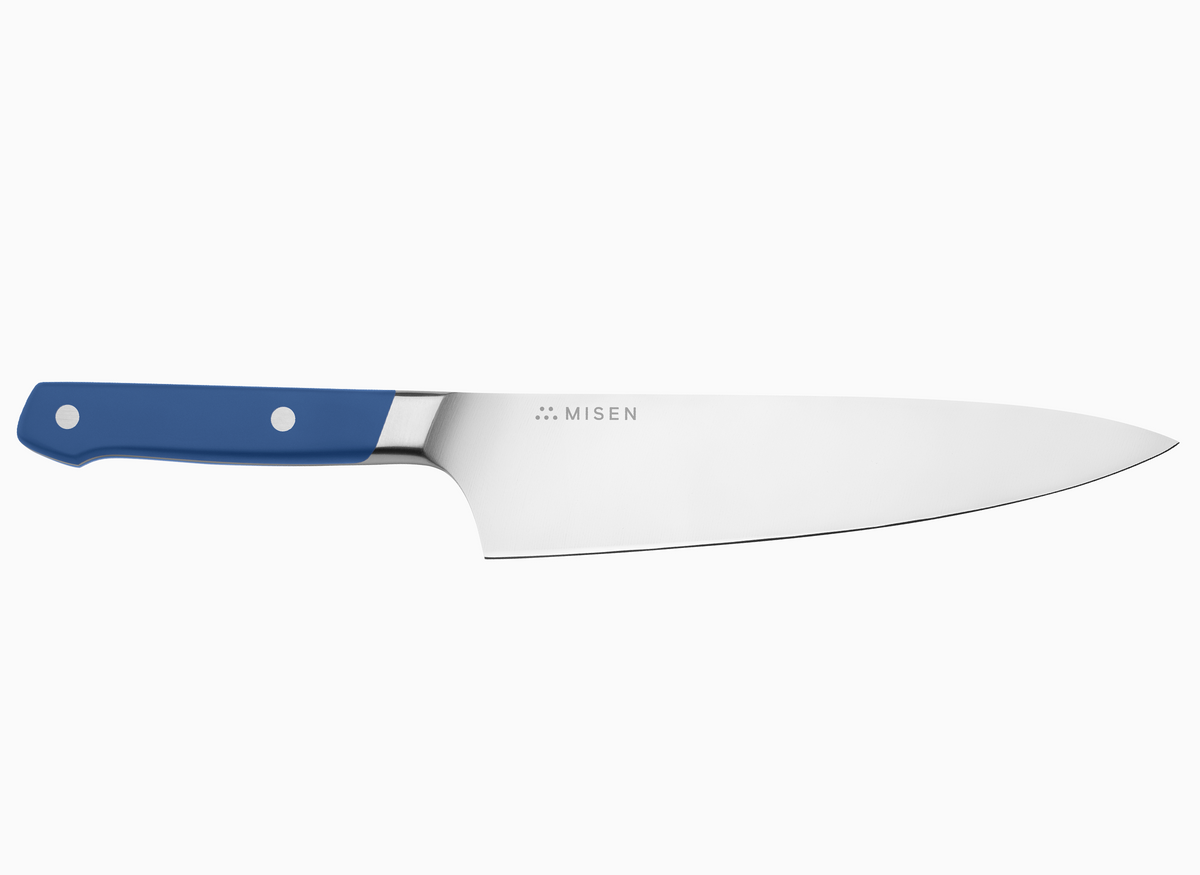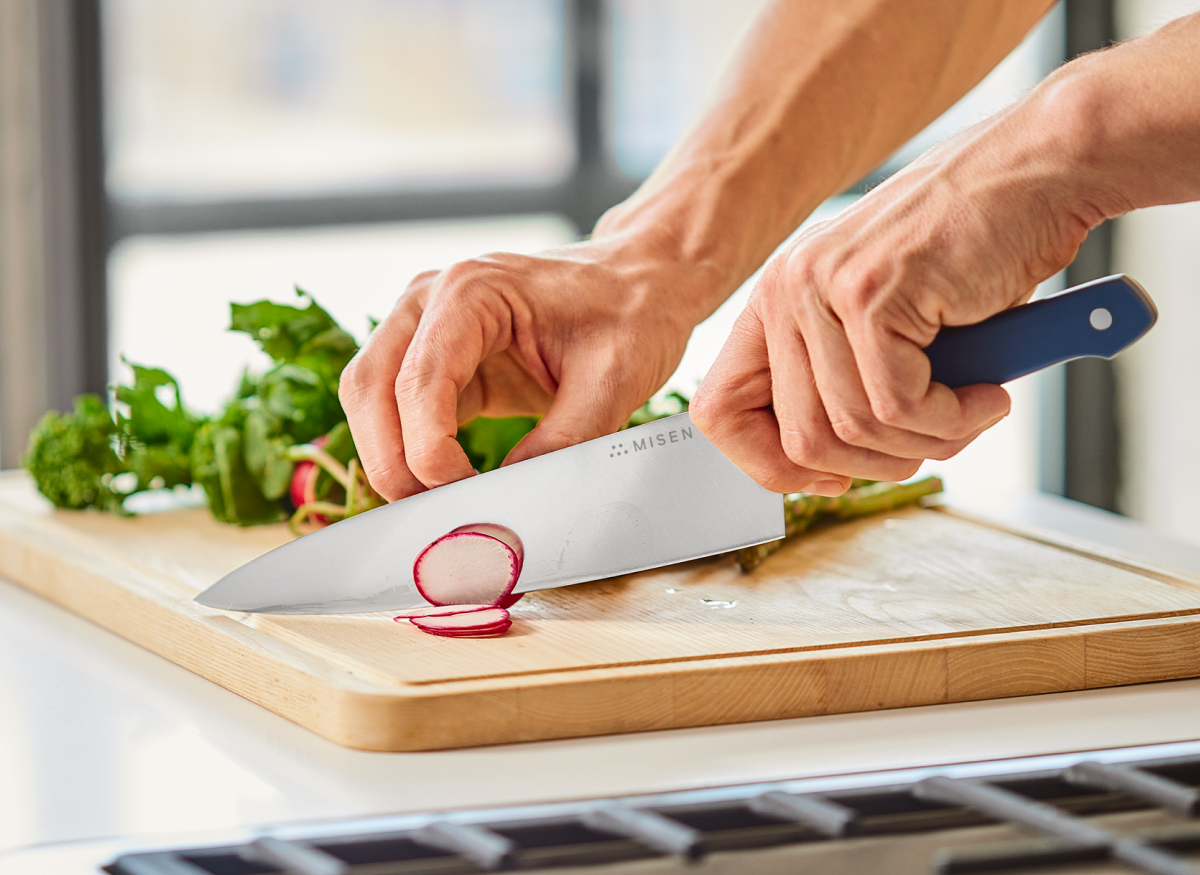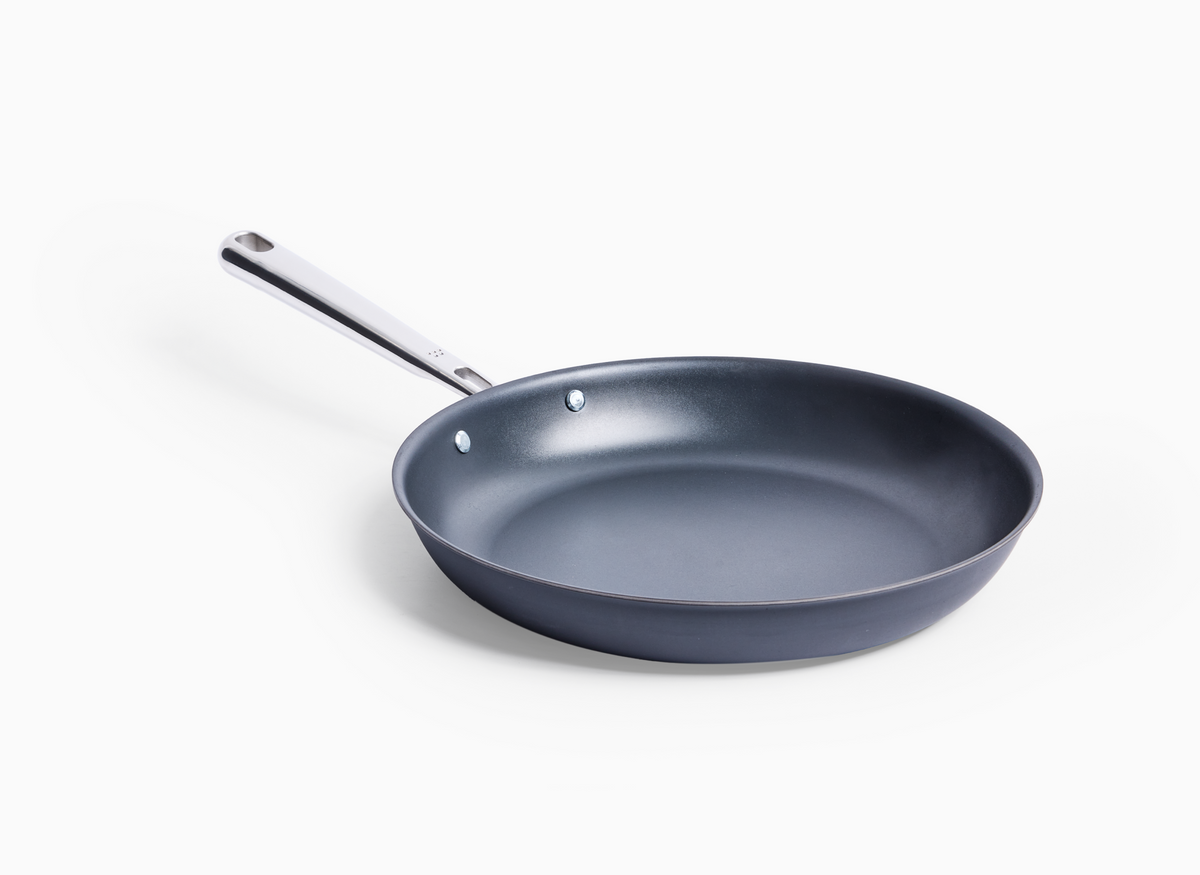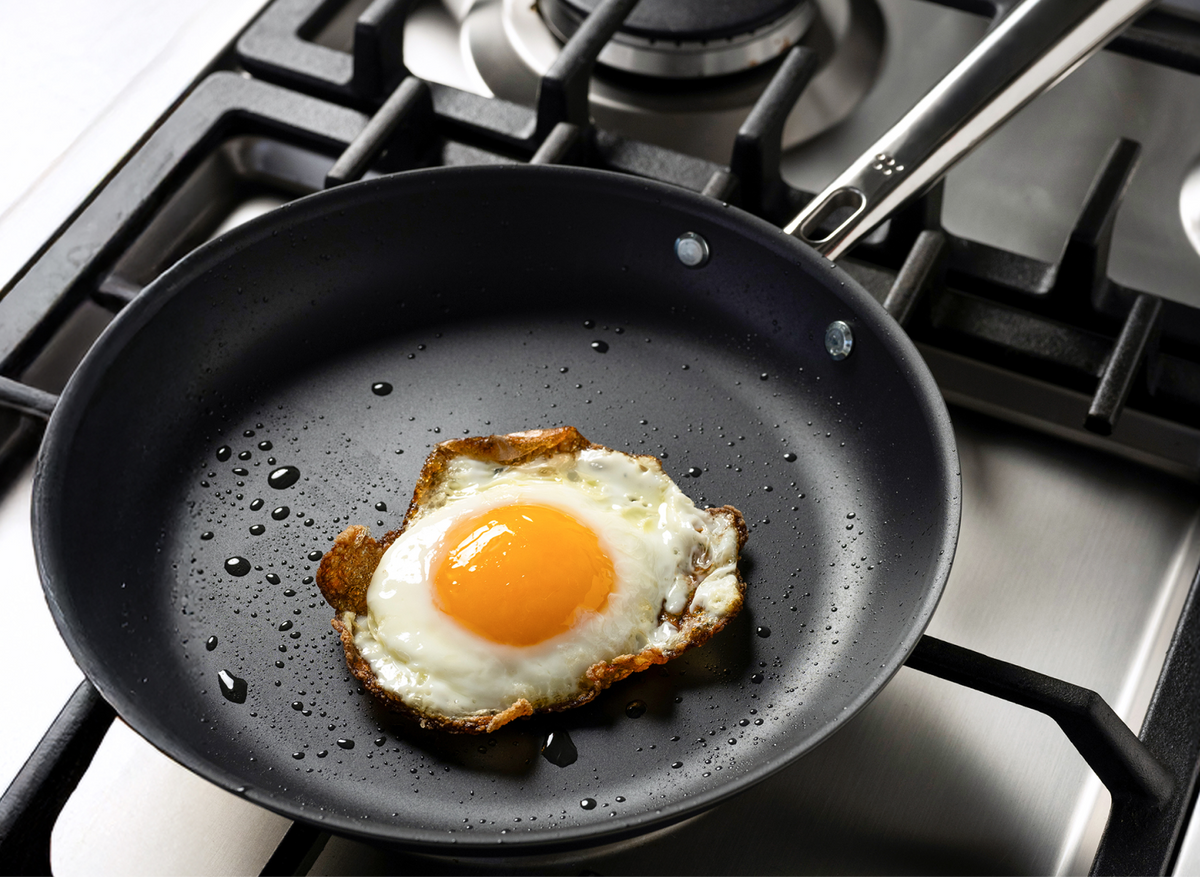For many reasons, cast iron is a pan that’s best for select cooking — it’s reactive to acidic food (although quick cooking is fine, long cook times can wear away the cast iron’s seasoning), takes some time to heat up, and is heavy. That being said, it’s well-loved for the flavor it adds to food. In time, a well-seasoned cast iron develops a glossy patina that produces a fairly (but not completely) non-stick surface.
There are certain foods that don’t cook well in cast iron. Acids, like tomato sauce and wine, will react with the iron surface when cooked over long periods of time. While this isn’t dangerous, it can impart a metallic taste to your dishes. Smelly foods, like fish or other seafood, are also not recommended. Since cast iron shouldn’t be scrubbed and scoured, the oils from previous dishes remain on the surface. So while you’re enjoying your crusty salmon fillet today, you may not like the taste of it in your cornbread skillet tomorrow.
Cooking with stainless steel, on the other hand, is a relative breeze. When used as the outer surface of cookware — in combination with aluminum or copper — stainless steel pans heat quickly, distribute heat evenly, and can be used to cook any ingredient in your pantry.





